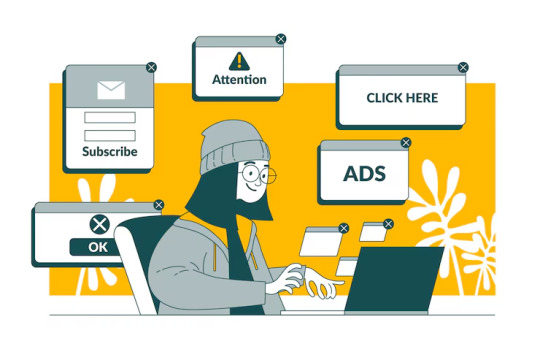#PPCStrategy2025
Explore tagged Tumblr posts
Text
Insane but Effective: 7 Google Ads Retargeting Tactics That Actually Convert in 2025

Ever feel like you're so close to converting a lead—but they vanish?
Here’s the truth: 96% of website visitors don’t convert on their first visit. But that’s not the end. In fact, it’s where the real magic starts—with retargeting.
Google Ads retargeting isn't just about following people around the web with your logo. When done strategically, it becomes a high-ROI tool that revives cold traffic, shortens the buying journey, and increases your conversions without increasing your ad spend.
Here are 7 insanely effective Google Ads retargeting tricks that top advertisers are using right now (and that you can start today).
1. Segment Audiences Based on Behavior, Not Just Visits
Stop lumping all your past visitors into one big retargeting list. Instead, create custom segments based on:
Time spent on site
Pages visited (e.g., pricing page vs. homepage)
Actions taken (e.g., added to cart but didn’t buy)
Why it works: You can deliver personalized messages that speak to where they left off in your funnel.
📌 Example: Retarget users who visited your pricing page with a limited-time discount ad.
2. Use Dynamic Remarketing to Show Products They Viewed
If you’re running an eCommerce store, dynamic remarketing is non-negotiable.
Google will automatically show users the exact products they looked at, along with similar ones. It’s personalized, relevant, and creepy in the best way.
Why it works: People are more likely to buy what they’ve already shown interest in.
📌 Bonus Tip: Pair with a review badge or trust signal to build credibility.
3. Retarget Cross-Device (Yes, It’s Possible)
Someone may visit your site on mobile and leave. But they might be more likely to convert on desktop later. With Google Ads, you can track and retarget across devices, thanks to smart algorithms and user data.
Why it works: You're meeting users where they're most comfortable to convert.
📌 Pro Tip: Use Google Signals for enhanced cross-device attribution.
4. Run YouTube Retargeting Ads (Yes, Even If You're Not a YouTuber)
If someone visits your website, you can show them video ads on YouTube—even if your brand doesn’t have a huge channel.
Why it works: Video builds trust. Seeing your brand “again” makes you more familiar and credible.
📌 Use short-form ads (6–15 seconds) with bold CTAs like "Still thinking about it?" or "Come back and save 10% today."
5. Time Your Ads Based on Funnel Stage
Timing matters. Someone who visited yesterday needs a different message than someone who bounced 30 days ago.
Break your audiences into:
1–7 days (hot leads → push offers)
8–21 days (warm leads → value-driven content)
22–60 days (cold leads → testimonials or case studies)
Why it works: You’re aligning your message with their mindset.
6. Exclude Converted Users (or Upsell Instead)
Nothing kills trust faster than retargeting someone who already bought.
Use conversion-based exclusions to avoid wasting budget and annoying customers.
OR, flip the script: Retarget buyers with upsells or loyalty offers.
📌 Example: “Loved your SEO audit? Get 20% off on our monthly optimization plan.”
7. Combine Google Retargeting With Custom Landing Pages
Generic ads to generic pages = wasted budget.
Instead, create retargeting-specific landing pages that address exactly what the user was interested in or concerned about.
Why it works: You’re reducing friction and increasing relevance.
📌 Example: If they viewed a service page but didn’t book, send them to a page with a case study + limited-time bonus.
✅ Final Thoughts: Retargeting Isn’t Creepy—It’s Smart
Google Ads retargeting in 2025 is more powerful, more affordable, and more strategic than ever. With the right segmentation, creative, and timing, you can turn window shoppers into loyal customers—without burning your budget.
Remember: You already paid to get them to your site. Don't let them walk away.
0 notes
Text
Still Ignoring Auto Campaigns? Here’s Why That’s Costing You Sales in 2025

Introduction: The Most Underrated PPC Tool?
If you’ve been running Amazon ads for a while, you’ve probably heard this advice before: ��Auto campaigns are just for beginners.” Wrong. Dead wrong.
Auto campaigns aren’t just a stepping stone—they’re a powerful profit-driving tool, especially when paired with smart strategy.
Whether you’re an Amazon seller scaling up or a digital marketer running ads for clients, auto campaigns still matter in 2025—maybe more than ever. And if you're sleeping on them, you're leaving money on the table.
Let’s dig into why auto campaigns deserve a second look, how to optimize them, and when they outperform manual campaigns (yes, really).
⚙️ What Are Auto Campaigns?
Auto campaigns on Amazon or Google allow the platform’s algorithm to decide where your ads appear. Based on your product info or landing page, it automatically selects keywords and placements for you.
In short: you let the platform do the targeting.
Sounds risky? Only if you don’t know how to use them right. Because in 2025, AI-powered algorithms have gotten smarter—and now know how to find buyers better than ever.
💡 Why Auto Campaigns Still Work (Even in 2025)
Here’s why they still matter—and why you might want to restart yours today:
1. Uncover New Keyword Opportunities
Auto campaigns often discover long-tail keywords you’d never think to bid on manually. These hidden gems can bring cheaper clicks and more relevant traffic.
🔍 Pro tip: Use a low bid and let your auto campaign run for 7–10 days. Then harvest high-converting search terms for your manual campaigns.
2. Perfect for Product Launches
Got a new product with zero data? Manual campaigns won’t work without search term history. Auto campaigns, on the other hand, collect that data fast—fueling future targeting decisions.
3. Low Maintenance, High Value
Once you optimize your negative keywords and bids, auto campaigns can become a low-effort, consistent performer—great for sellers who don’t want to micromanage.
4. Smarter AI = Smarter Targeting
Amazon and Google have upgraded their AI drastically. In 2025, auto campaigns have become smarter than ever—learning what converts quickly and adjusting in real-time.
5. Great for Seasonal or Test Products
Testing a bundle? Launching something seasonal? Auto campaigns give you quick insights without building complex keyword structures manually.
🚫 Mistakes to Avoid With Auto Campaigns
Auto campaigns can waste money—if you let them run wild. Here’s how to keep them in check:
❌ Not Using Negative Keywords Always block irrelevant or poor-performing terms.
❌ Running with High Bids Set conservative bids and raise only after seeing results.
❌ “Set and Forget” Mentality Review search term reports weekly, especially in the first 14 days.
❌ Using Auto Alone Forever Use it as a data source and supplement—not your only ad strategy.
✅ How to Make Auto Campaigns Work with Manual Campaigns
Smart sellers don’t choose between auto or manual—they use both in tandem.
Here’s a quick workflow:
Start auto campaigns to gather data
Monitor search terms and identify winners
Transfer high-performers to manual campaigns for tighter control
Block those same terms in the auto campaign as negative keywords
Repeat every 2 weeks for optimized traffic and ROAS
📈 Real Case: Auto Campaign Turnaround
One of our clients thought auto campaigns were "a waste of budget." After testing again with proper negative keywords and a fixed bid structure, they saw:
38% increase in impressions
27% drop in ACOS
15 new converting keywords they added to their manual campaign
Cost? Just $10/day. ROI? Over $2,500/month in additional sales.
🔚 Final Thoughts: Don’t Underestimate Auto
In the world of PPC, nothing is truly “set it and forget it”—but auto campaigns come close when set up correctly. They’re not just for beginners. They’re not outdated. They’re evolving.
And in 2025, they might just be your secret weapon for keyword discovery, rapid product validation, and cost-effective scaling.
0 notes